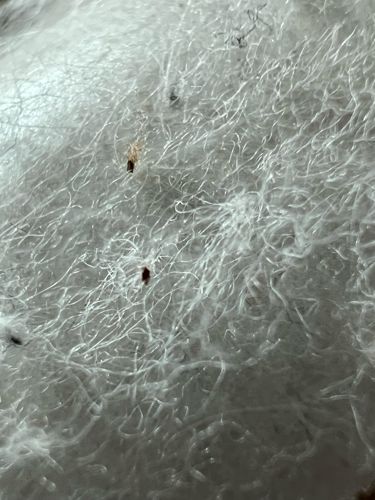Lice
Scientific Name: Phthiraptera (Order)
Order & Family: Order: Phthiraptera
Size: 1-4 mm long

Natural Habitat
Obligate ectoparasites found on the skin and hair/feathers of mammals and birds. The specific types in the image (likely human head/body lice based on context) inhabit human hair or clothing fibers.
Diet & Feeding
Blood (hematophagous) of their host. They feed several times a day.
Behavior Patterns
Lice are wingless, highly specialized parasites. They spend their entire life cycle on a single host. Females lay eggs (nits) which are cemented to hair shafts or clothing fibers. Nymphs hatch from nits and mature into adults after several molts. They are usually slow-moving.
Risks & Benefits
Risks: Cause intense itching (pruritus), skin irritation, and potentially secondary bacterial infections from scratching. Heavy infestations can lead to anemia. They can transmit diseases (e.g., body lice can transmit trench fever, relapsing fever, and typhus). Benefits: None for humans; they are generally considered pests.
Identified on: 10/22/2025